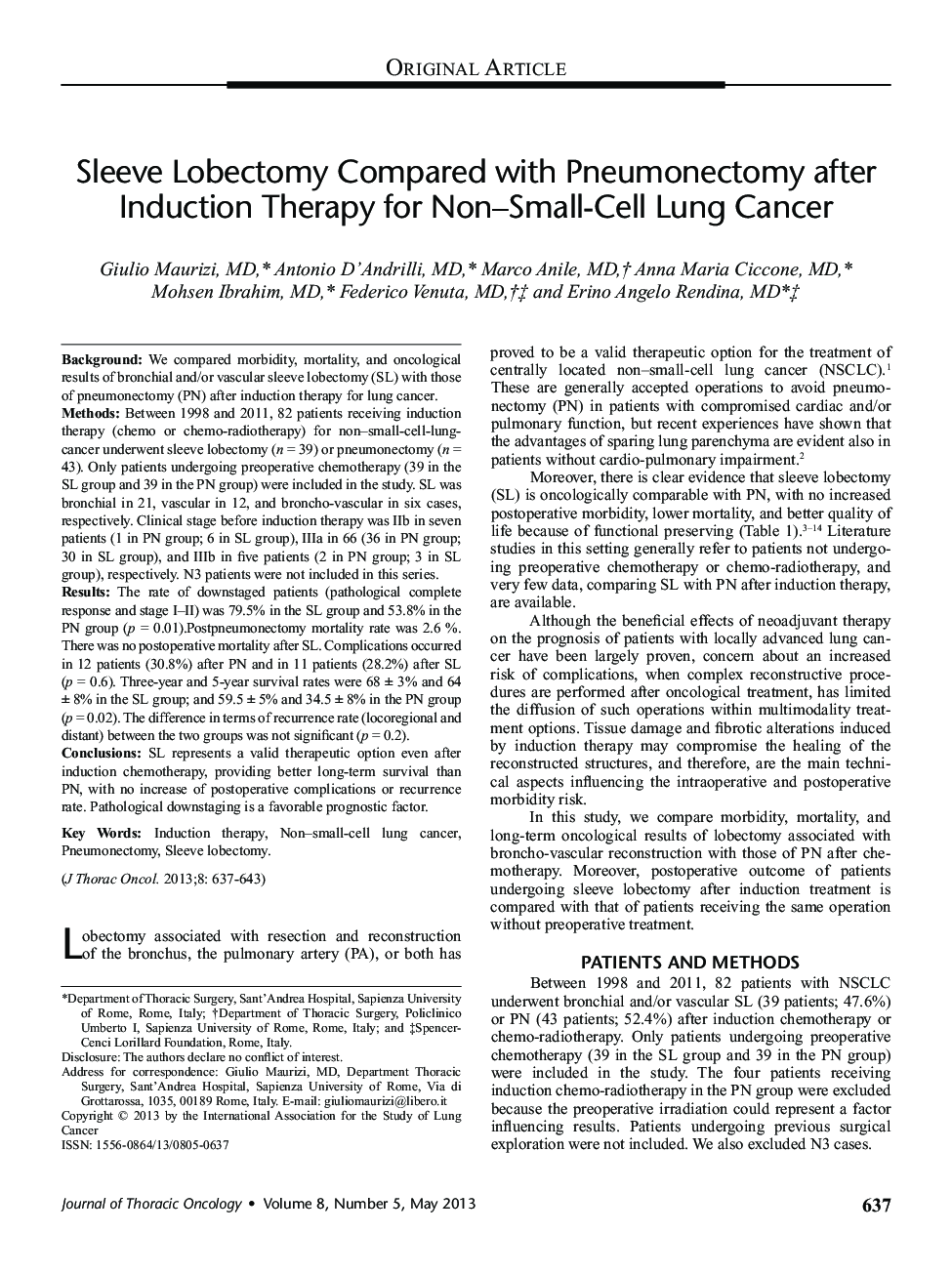| Article ID | Journal | Published Year | Pages | File Type |
|---|---|---|---|---|
| 3990276 | Journal of Thoracic Oncology | 2013 | 7 Pages |
BackgroundWe compared morbidity, mortality, and oncological results of bronchial and/or vascular sleeve lobectomy (SL) with those of pneumonectomy (PN) after induction therapy for lung cancer.MethodsBetween 1998 and 2011, 82 patients receiving induction therapy (chemo or chemo-radiotherapy) for non–small-cell-lung-cancer underwent sleeve lobectomy (n = 39) or pneumonectomy (n= 43). Only patients undergoing preoperative chemotherapy (39 in the SL group and 39 in the PN group) were included in the study. SL was bronchial in 21, vascular in 12, and broncho-vascular in six cases, respectively. Clinical stage before induction therapy was IIb in seven patients (1 in PN group; 6 in SL group), IIIa in 66 (36 in PN group; 30 in SL group), and IIIb in five patients (2 in PN group; 3 in SL group), respectively. N3 patients were not included in this series.ResultsThe rate of downstaged patients (pathological complete response and stage I–II) was 79.5% in the SL group and 53.8% in the PN group (p = 0.01).Postpneumonectomy mortality rate was 2.6 %. There was no postoperative mortality after SL. Complications occurred in 12 patients (30.8%) after PN and in 11 patients (28.2%) after SL (p = 0.6). Three-year and 5-year survival rates were 68 ± 3% and 64 ± 8% in the SL group; and 59.5 ± 5% and 34.5 ± 8% in the PN group (p = 0.02). The difference in terms of recurrence rate (locoregional and distant) between the two groups was not significant (p = 0.2).ConclusionsSL represents a valid therapeutic option even after induction chemotherapy, providing better long-term survival than PN, with no increase of postoperative complications or recurrence rate. Pathological downstaging is a favorable prognostic factor.
